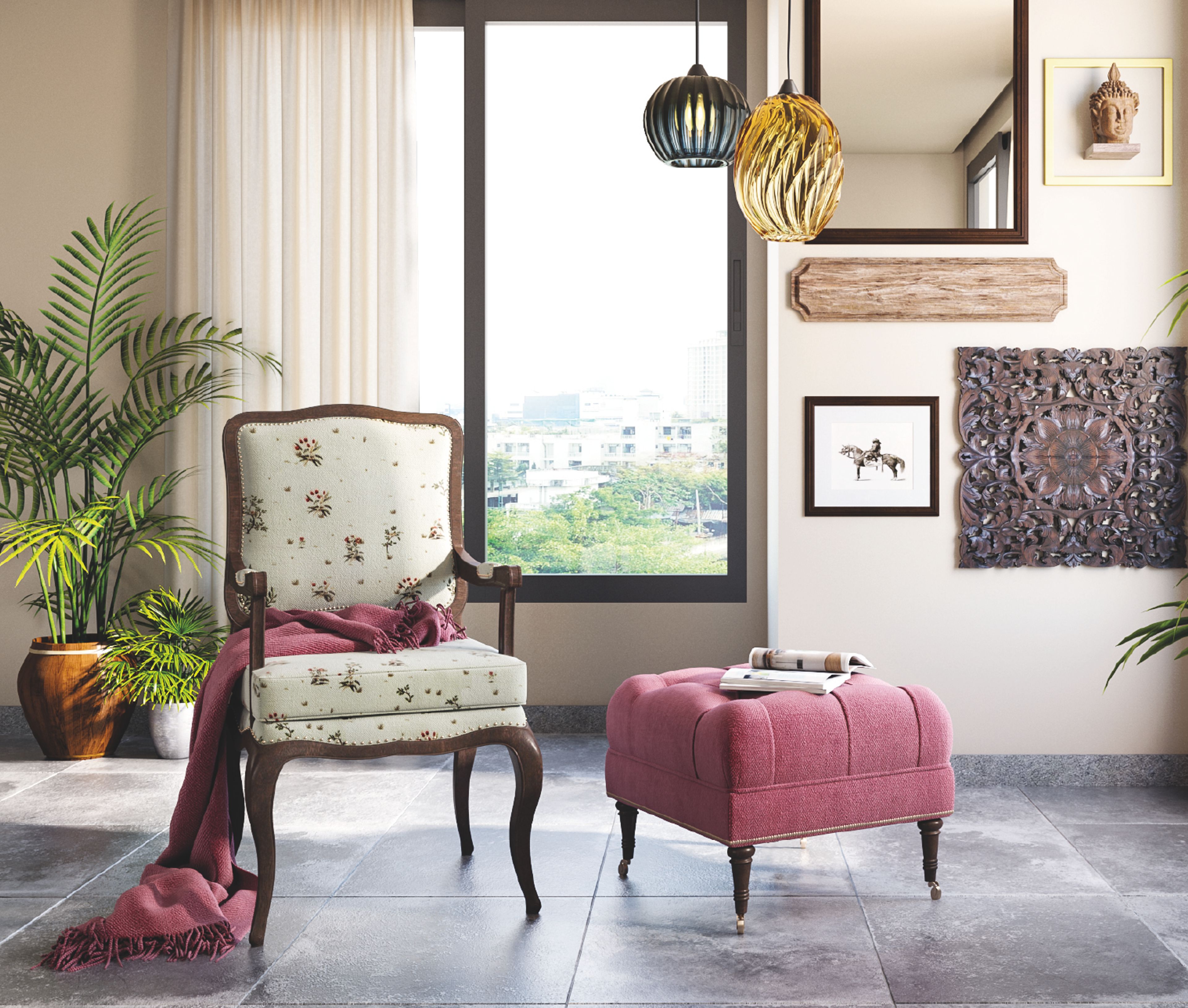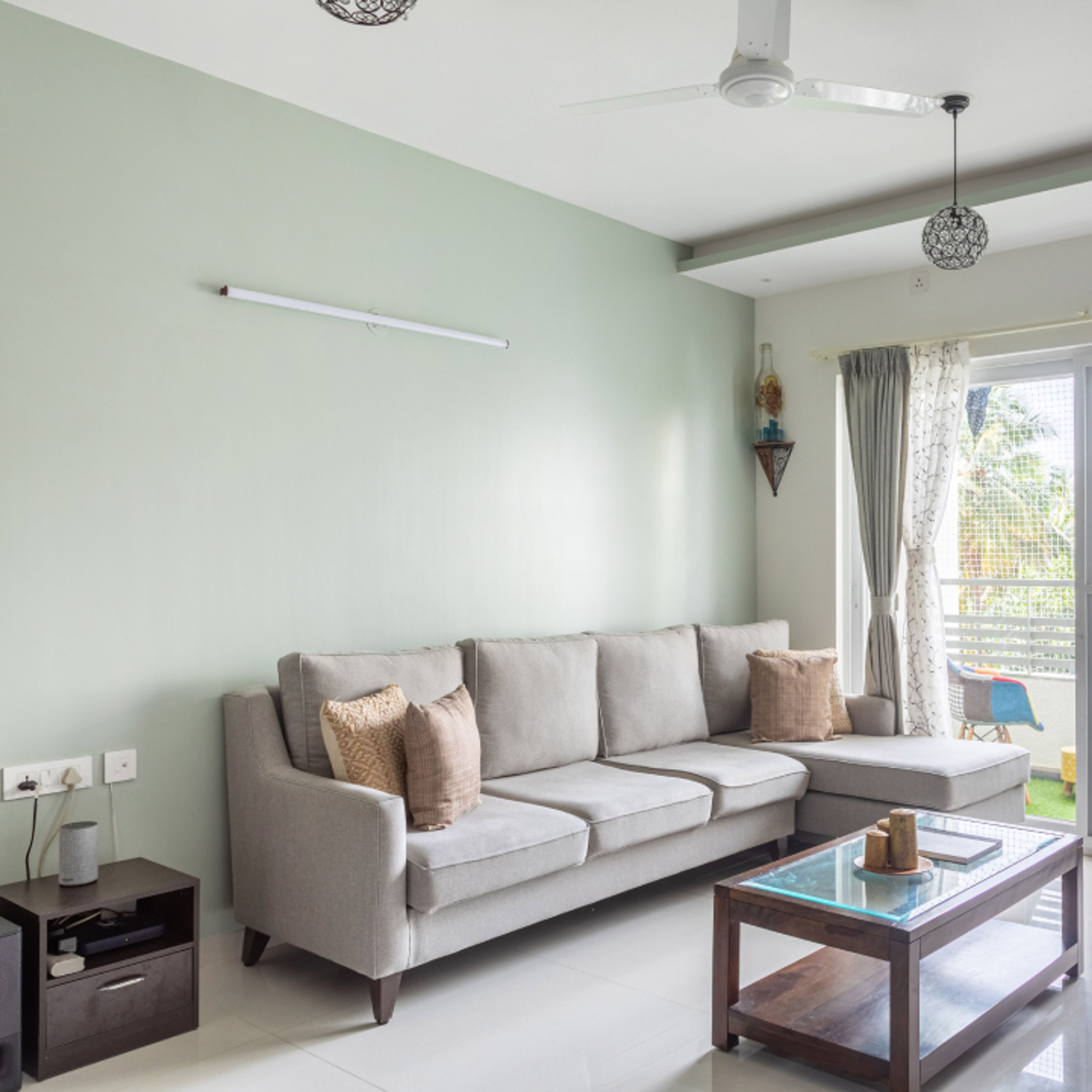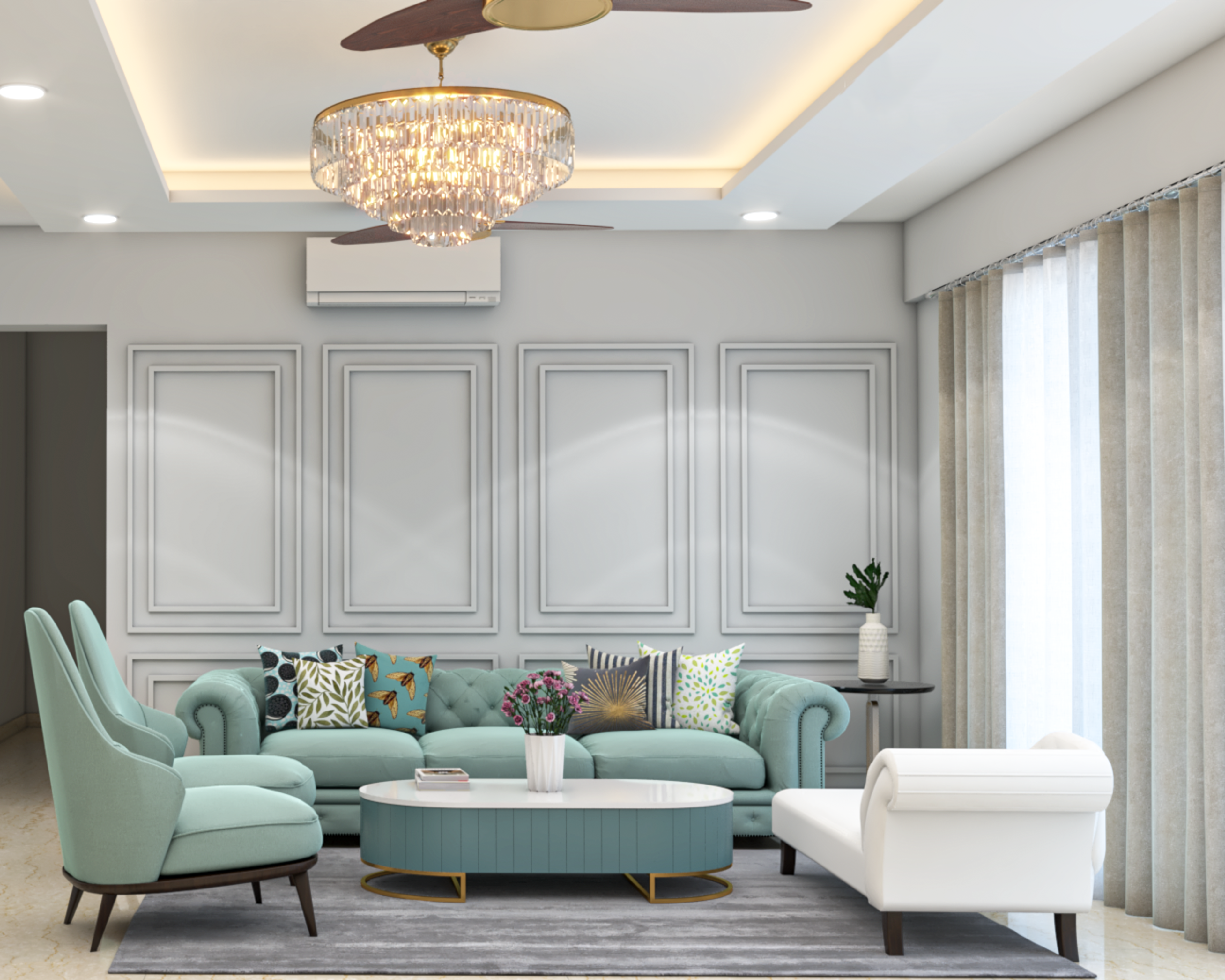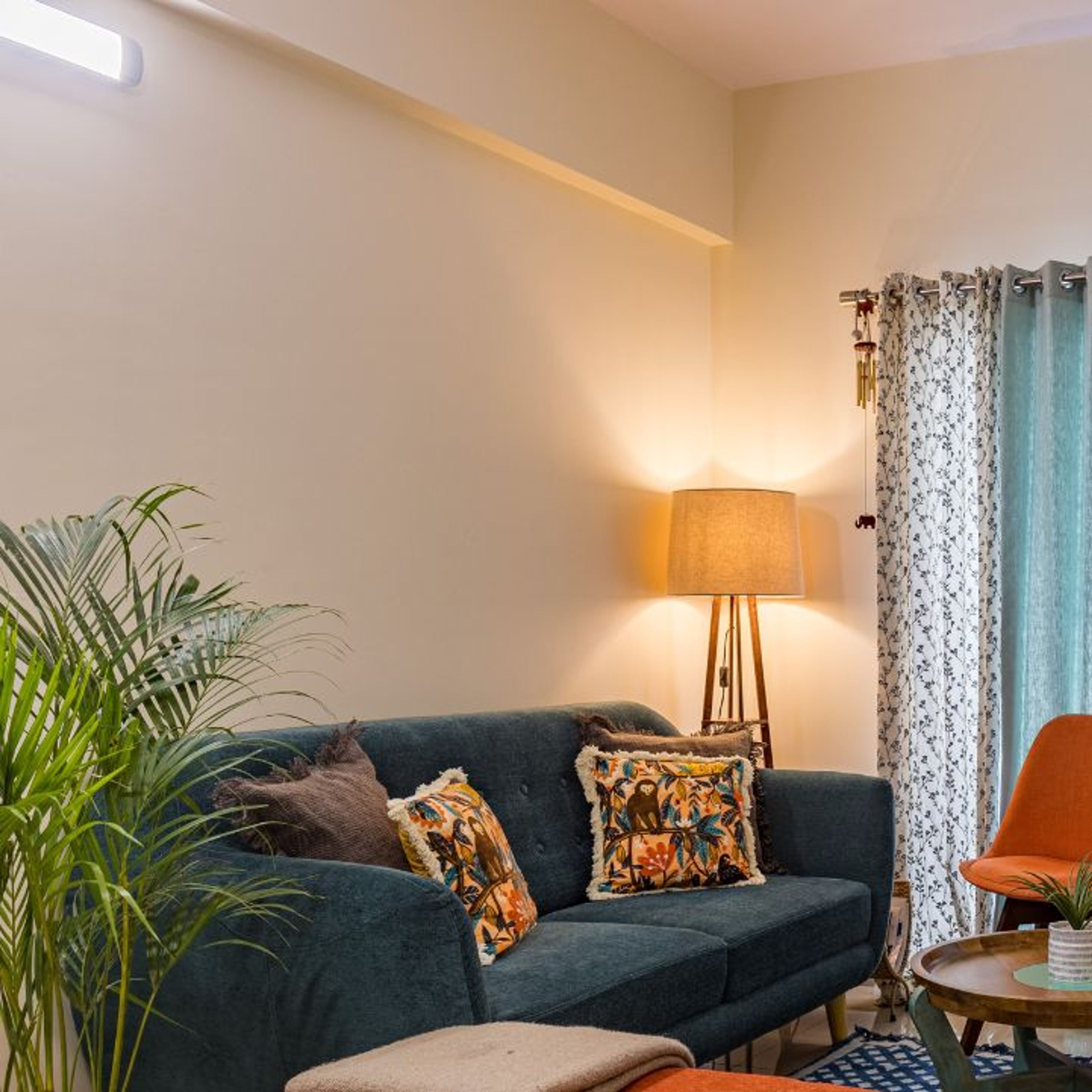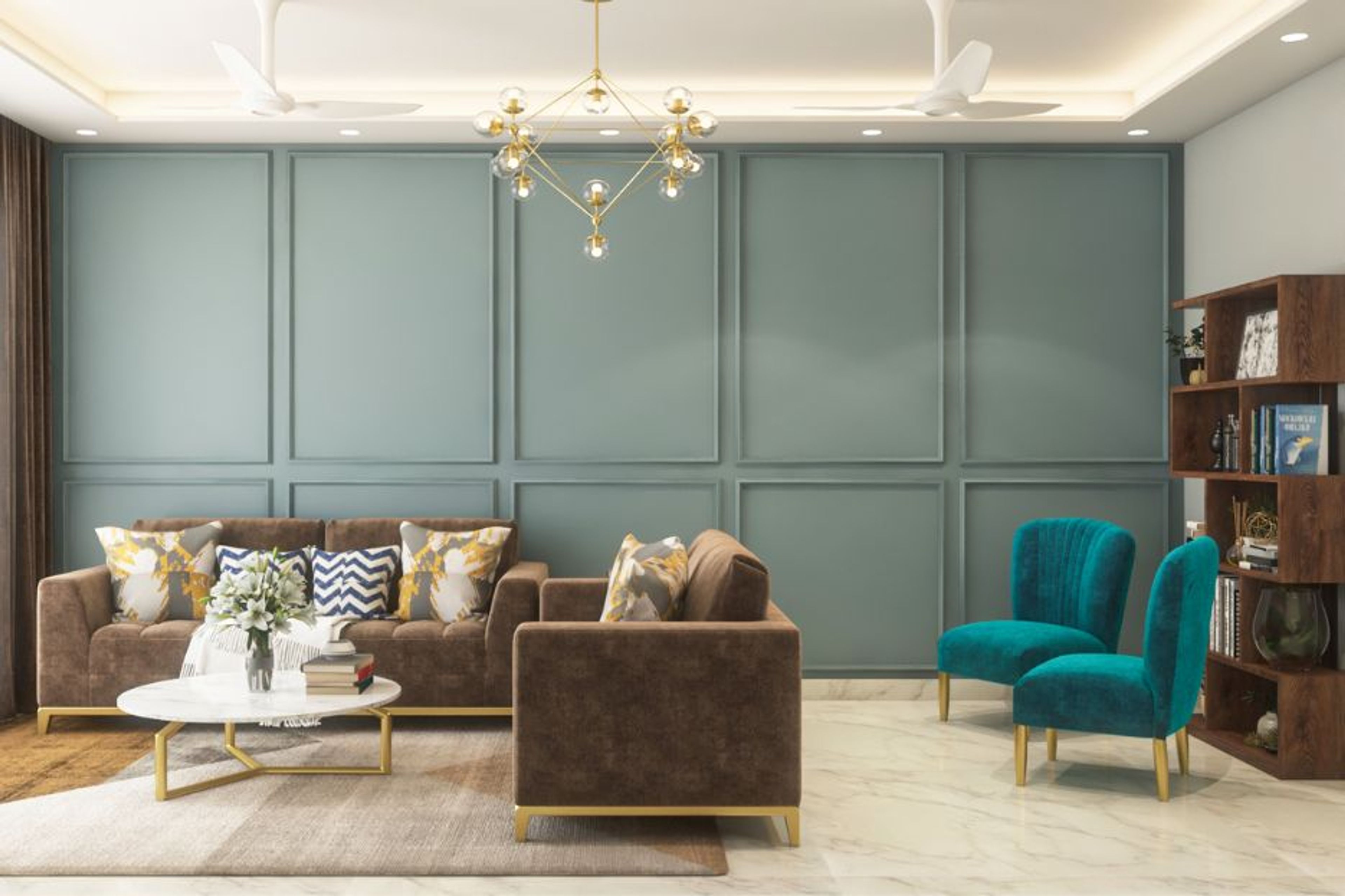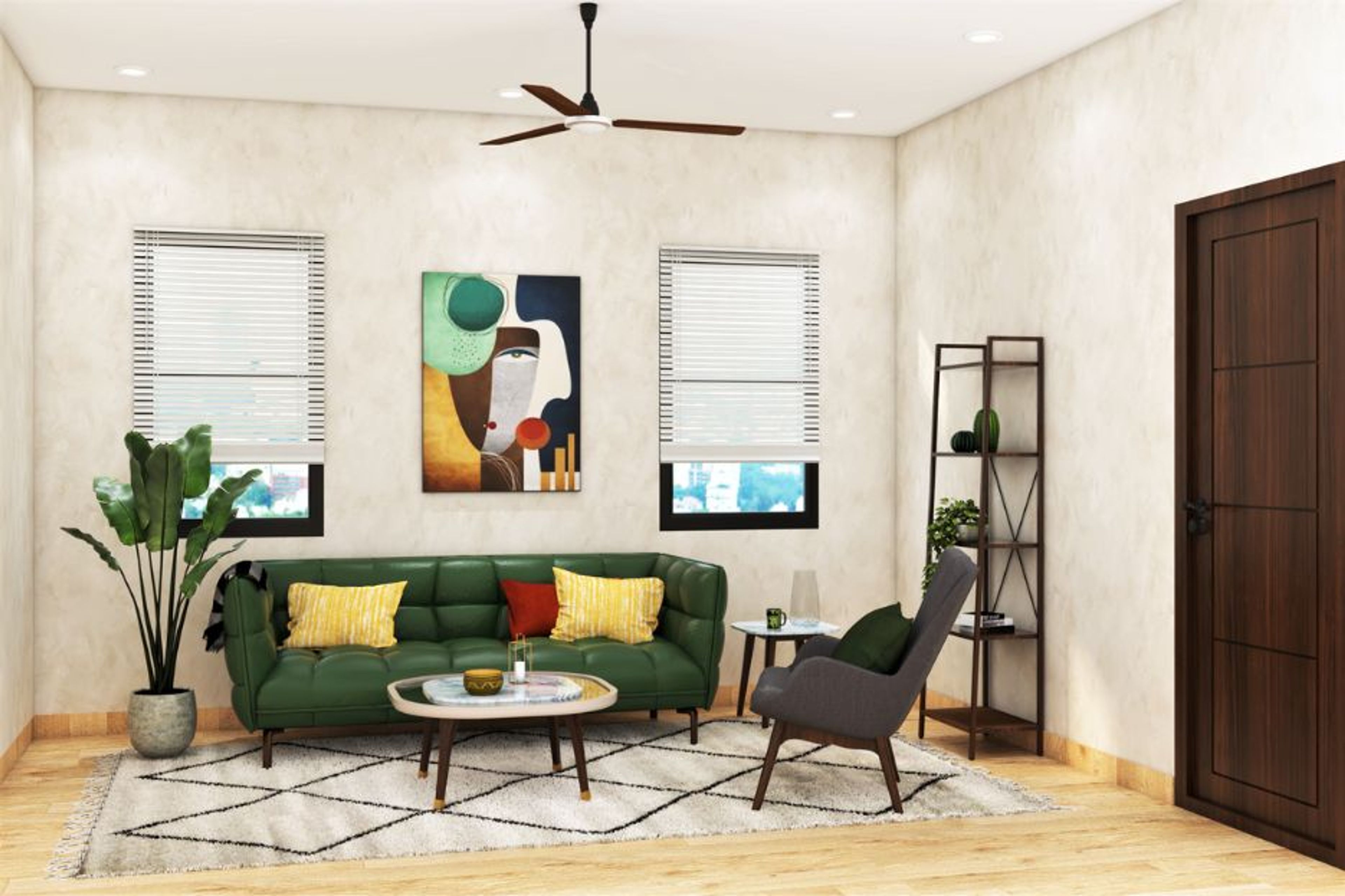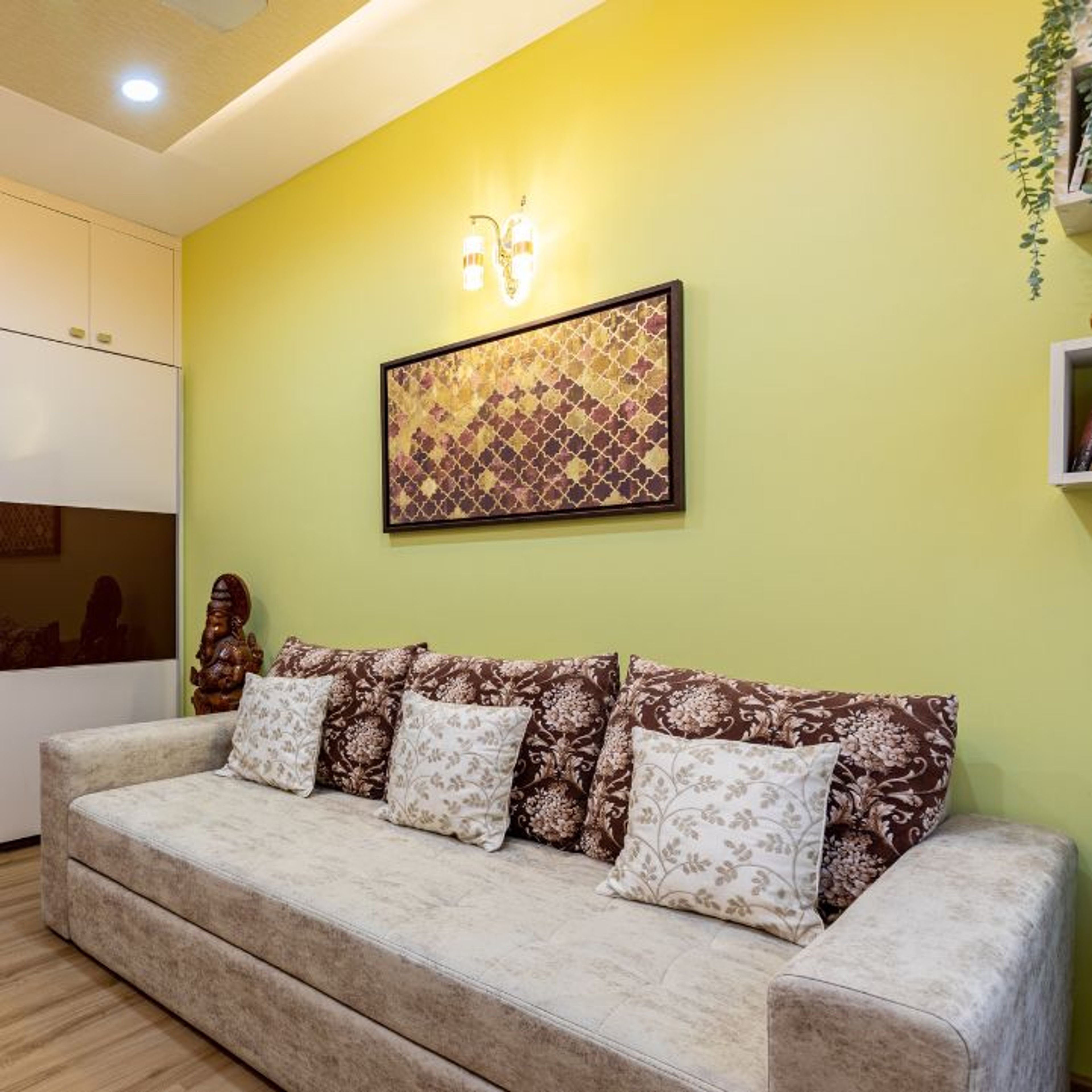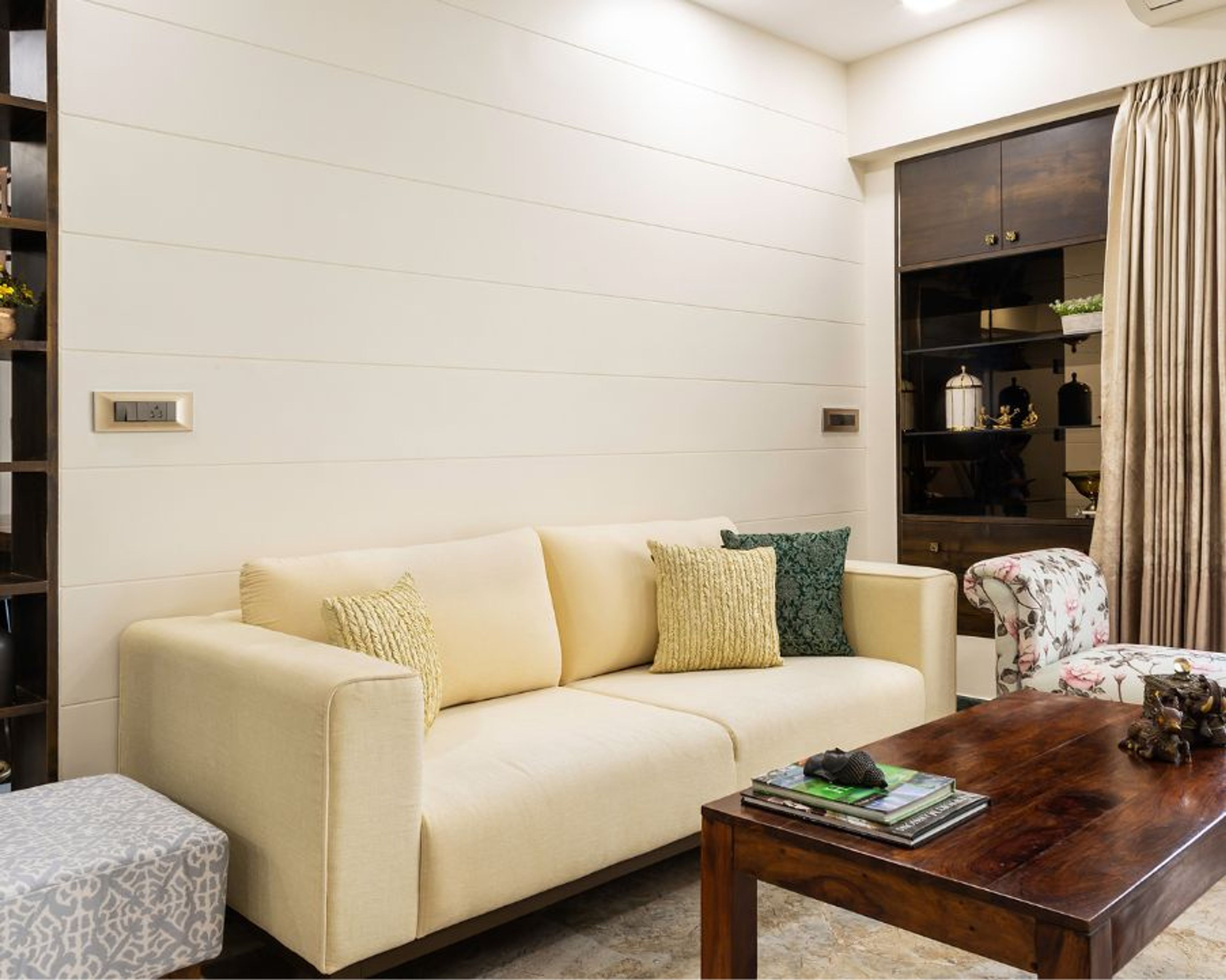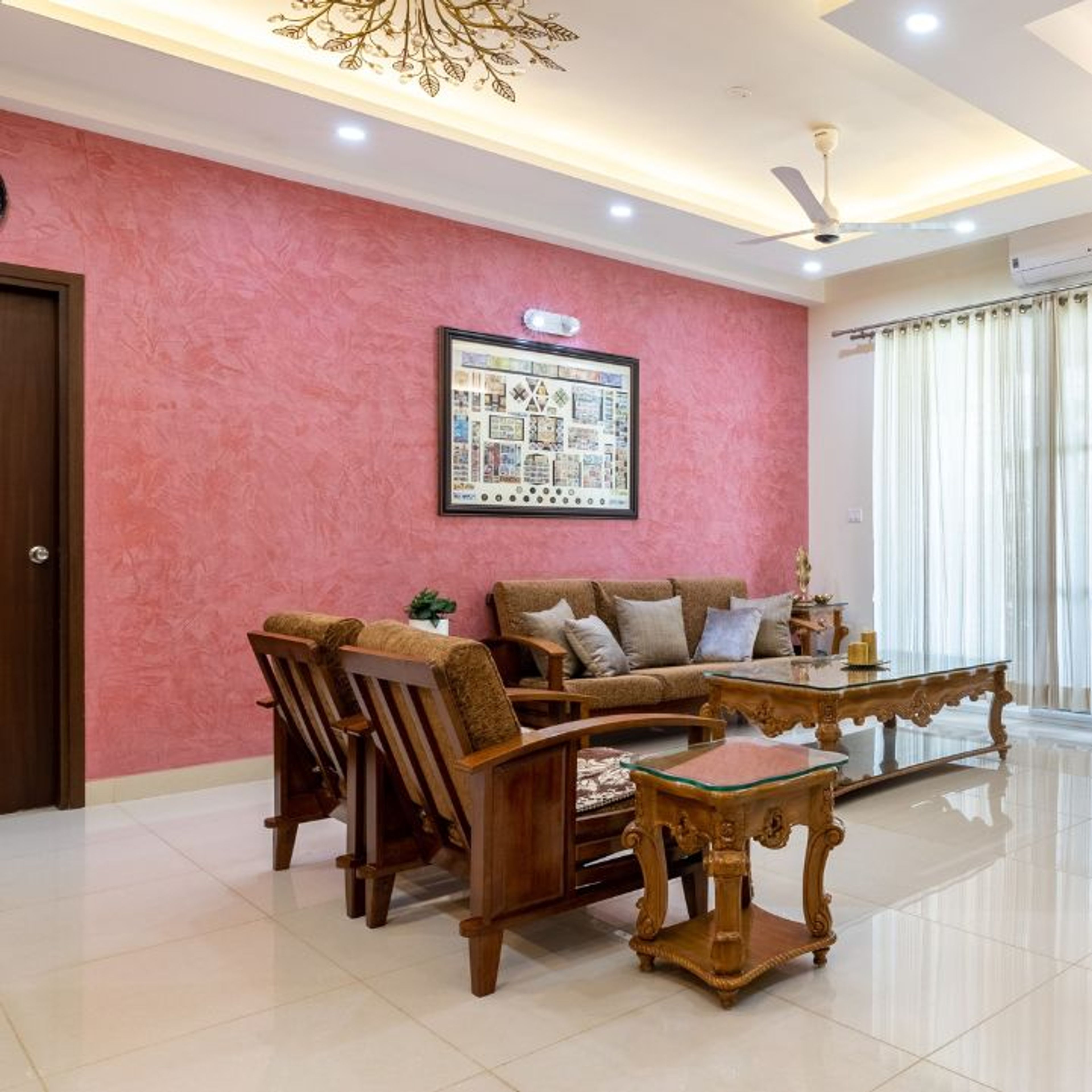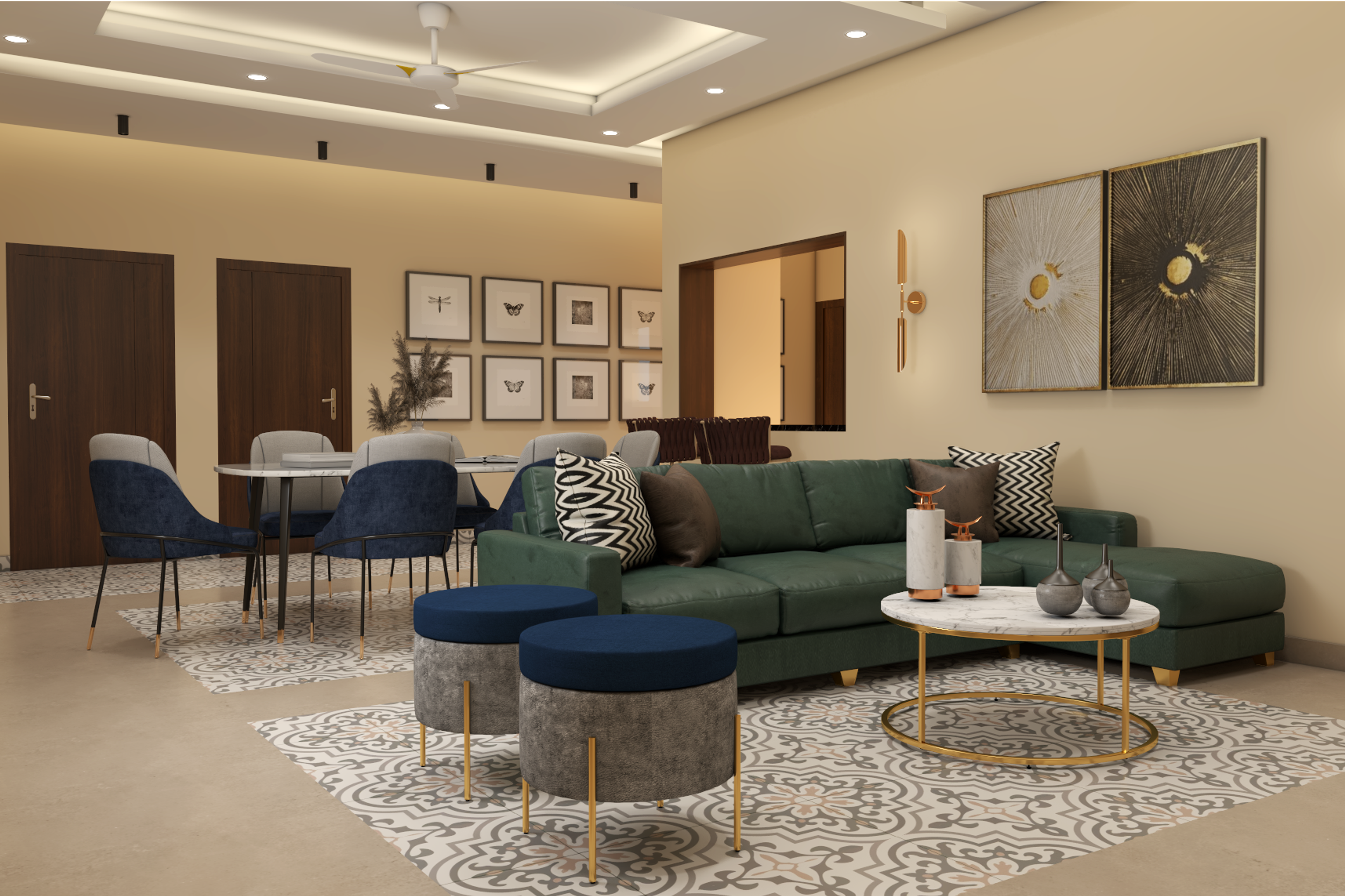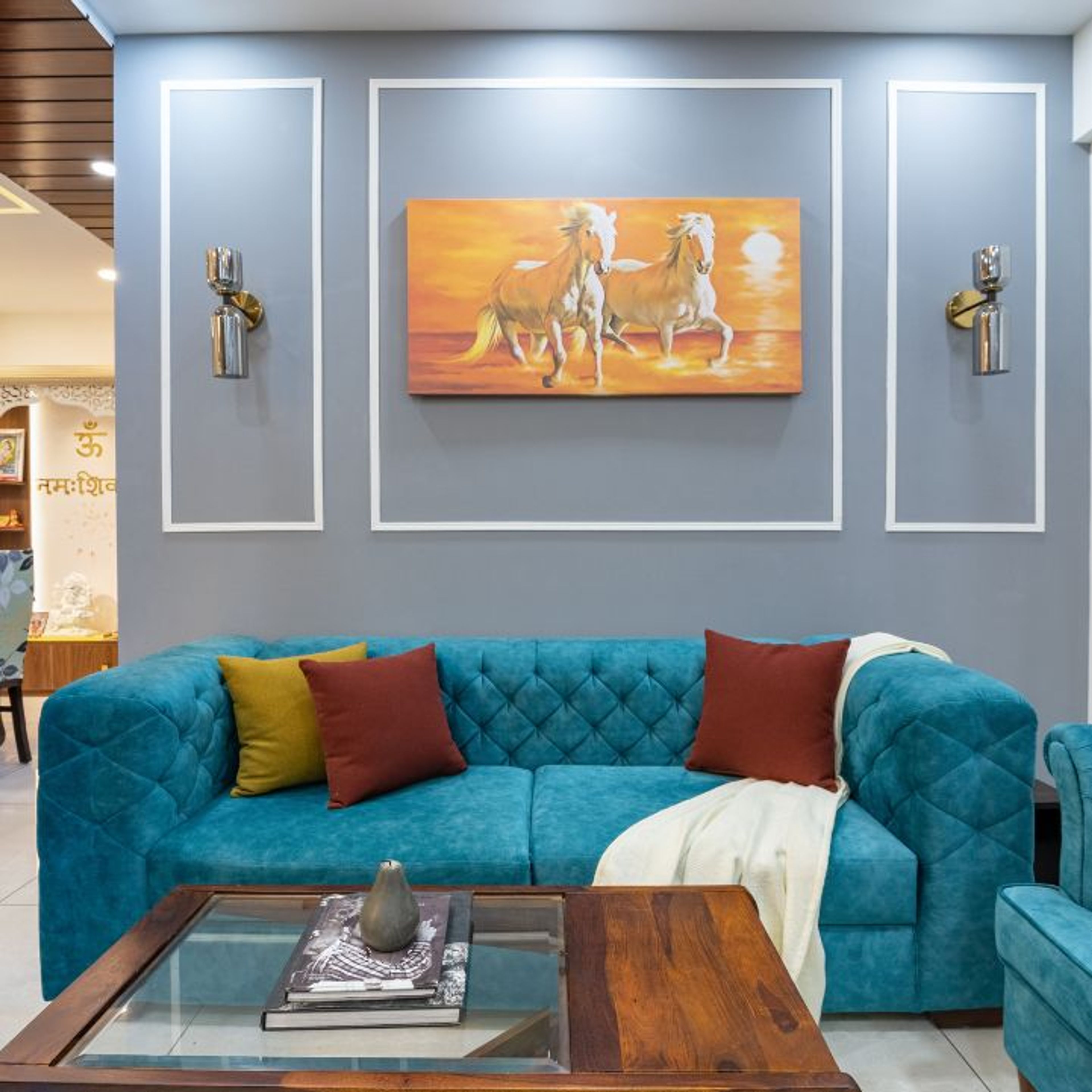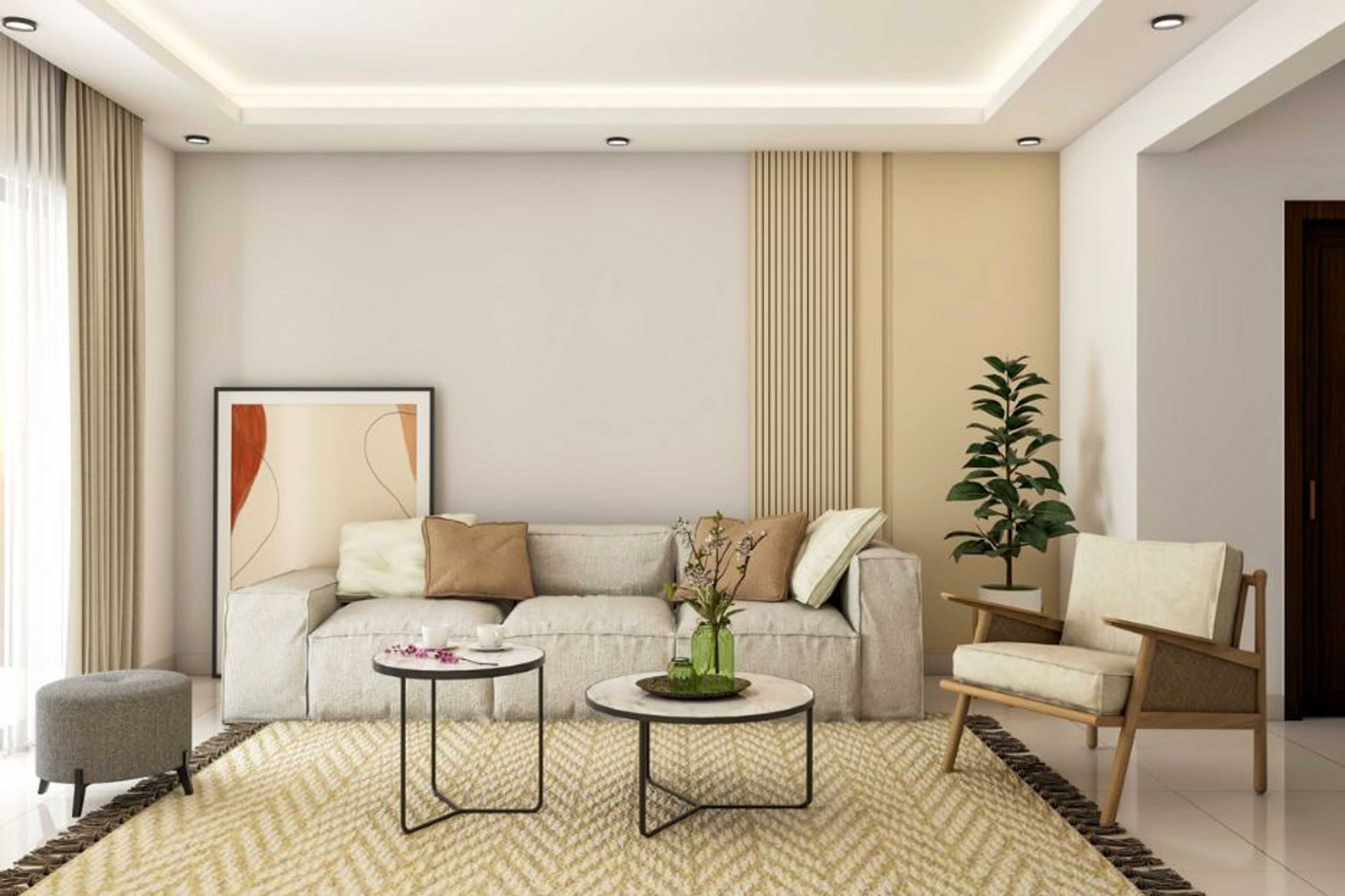Guide To The Best Type Of Paint For Living Room
Living rooms form first impressions of your homes. Wall paints are perfect to create impressions. Adorn the best interior and wall paint combinations to create a masterpiece. As you know, the moment you choose a wall colour combination for your living room, you lock in a look for at least five years. Also, keep future upgrades in sight while making those wall paint choices.
A plethora of options are available leaving you lost in the maze of choices. We have a curated post just to address your needs, confusion and concerns. Scroll through for more insights.
Different Type Of Wall Paint For Living Room
Oil-Based Paints
The oil-based paints are high on durability and withstand routine contact making them ideal for mouldings and trims. Use these paints on surfaces that you wish not to paint for a long time. The oil-based paints have a pigment, resin and a solvent thinner. Once the thinner evaporates, the resin forms a hard unbreathable layer on the wall that allows them to resist stains. These paints take more time to dry than latex-based paints.
Latex-Based Paints
The later-based paints are also called water-based paints. These paints are popular and also environmentally responsible. These colours dry faster than oil paints, their retention is high over time. Latex-based paints can be applied over oil paints but the reverse is not true.
Oil-Based Vs Latex-Based Paints
The oil-based paints use solvents like spirits and alcohol in paint thinners. They improve the texture and flow of the paint. However, water-based paints use water as a carrier which evaporates after the paint is applied to walls. Another major difference is the binder that affects adhesion properties to the walls. The binding material is either synthetic resin or natural oil-based like linseed oil which influences finishes like satin, semi-gloss or high-gloss. Latex paints use water as a binder which evaporates after paint application.
Different Wall Paint Finish For Living Room
Overall Best Choice: Satin
Satin finishes are similar to a lustre of a pearl - soft, shiny and velvety. Although, Satin finish reflects lesser sheen than glossy paints. Perfect for rooms that receive less natural sunlight such as hallways, kitchen, and bathroom. However, if a tall building is blocking natural sunlight in your living room or the living room is in a direction where only diffused sunlight is received which vanishes during a cloudy day, you may opt for a satin finish. Deploy an experienced painter for satin finishes as any imperfection of brush strokes would reveal themselves on satin finishes.
For High Traffic: Semigloss
If you have disdain for too much sheen, semi-gloss is a perfect solution to reach a middle ground. They are soft, reflective and easy to clean and perfectly complement other shades with even flat shades. They are perfect for high-traffic areas such as living and kitchen. Paints with semi-gloss are highly durable and perfect for moisture-prone areas of the walls.
For a Rich Look: Matte
The matte look is non-reflective with a muted tone that lends a subtle elegance to spaces with their minimum soft sheen. They contain more pigments that provide richer and larger coverage on walls while being economical. They are perfect at hiding imperfections in walls. Perfect for accent walls in the living room.
Trendy Colour Combinations For Living Room Paint Ideas
We got you covered with ‘Back To Nature’ trending shades - soothing, warm earthy and some pops of colours for the living room paint ideas.
Coral Shades Between Orange To Reds
The scintillating shades of corals usually lie between orange and red. Pick a shade that suits your fancy - a shade either closer to orange or a shade touching the boundaries of red. You would get raspberry and its blush variants to rose quartz, dust pink, peach and melting sunset oranges. These bright and cheerful bunch of saturated shades are lively and energising to spaces and souls. Craft rooms for a cosy-warm vibe with trims on these shades. Use coral shades for a minimal style statement on foyer walls or kitchen backsplashes. Balance their charm with softer shades of cream, white, grey or beige.
Is It More Blue Or Green?
The beautiful blend of ocean blues and greens is scintillating to the senses. One takes a moment to figure out if that beautiful shade on the accent wall is bluer or greener. In the end, you claim those praises. The intriguing Ivys, teals, turquoise, sea greens and aquamarine blues blend seamlessly with themes ranging from vintage to contemporary. Take a safe, confident plunge with these sea-inspired shades. Pair them with more sea elements of stone accents, sandy whites or light browns and wood textures. Experiment by pairing these dual shades with solids of blue or green on walls, furnishing, drapes or accessories.
Rust Is The In Thing
Rust shades are taking over with their earthy natural palette that suits modern sustainable styling. Consider a rust pink and clay shade with an earthy tone lending a subtle neutral with just enough accent to cherish. Try the rust greige - a blend of grey and beige with a slight hint of red undertone. Rust shades pair well with dijon mustard yellows and greens with the duality of teals. They wrap the spaces in warmth and a soothing calm ambience. Well, you may experiment with other interesting shades in consultation with our maverick design experts to get that perfect rust touch with the blend of shades. Prepare for a cheerful soothing vibe and the beauty preserved on the walls.
Suave Monochromatic
The sophistication of monochrome reaches its epitome when one shade with varying degrees of tone is used. Use the classic crown moulding with trims on the walls and a ceiling painted in greys. Use gold, bronze or copper finish on lamps, frames, planters and accessories for an elegant touch. Silk finish works its magic with greys. Create a silk finish for the perfect spread of sheen on the shades - not more, not less.
Citrus In Small Doses
We all love small shots of citrus for that healthy tangy punch of visual freshness. Use varying citrusy shades with green or yellow as a base to create a focal point for a nook in your living room. Citrus shades lend a punch to the design when used minimally on a wall. Try Avante Garde designs with shades of lime yellow to chartreuse - yellow-green. Citrus adorn the walls in self-appreciation without the need for any accessories to spruce it up.
Benefits of Eco-Friendly Paints
The theme of sustainability is seeping into the common consciousness. This trend is shaping earthy shades, naturally made materials and rustics are reinventing boundaries of neutrals and earthy shades.
The eco-friendly paints are perfect for families with young toddlers, pets or any family member who suffers from paint allergies. Avoid those synthetic smells of chemicals post the paint job, any hazardous emissions and future health risks.
Consider all-natural paints made of neem oil, linseed oil, castor seeds, tree resins, calcium carbonate, lemon peels, bee wax, water and natural dyes. They are anti-bacterial and allow the walls to breathe while regulating room temperatures better. There are other variants with almost no VOC or low VOC with 50gm per litre. These are non-polluting to the environment keeping your carbon footprint to the minimum.
Paint The Ceilings!
Already looking at your living room ceiling with a fresh perspective? Ceilings are assumed to adorn neutrals, especially whites to make rooms appear larger. This fifth wall of your bedroom is an underutilised element of any design theme. If you believe false ceilings can spruce up the look of room tops, then so can wall paint design for living rooms. Experiment with a fusion of false ceiling and paint. Imagine walls and a peripheral false ceiling in neat white with an earthy brown adorning the centre top of your ceiling with diffused lights highlighting it. Choose light or earthy shades that are easy on the eyes. Try pastels and you would thank us for that refreshing and calming vibe every time you look at your ceiling. Experiment with grey or pitch black that goes well with a minimalist living room theme. So if you have finalised your design themes with light colour walls, consult Livspace design experts on inspirational designs for the lesser cherished fifth wall.
Frequently Asked Questions (FAQS)
What Type Of Wall Paint Is Best For A Living Room?
Wall paint designs for living rooms are available in eco-friendly with natural ingredients or low VOC content, emulsion - mostly water-based and enamel oil-based paints. There are speciality paints which are anti-fungal, anti-bacterial and anti-corrosive. You may choose as per your needs, weather conditions and interior requirements.
Which Colours Are Best For Living Room Wall Paint?
You may choose a wall paint colours based on the pre-existing theme across the house or the theme you decide upon for your living room. The choice of colours also depends on the size of your space and the furniture you own. For the minimalist theme, pick grey, back, white or brown. If you are someone who enjoys subtle colour, you could opt for pastels.
How Can I Make My Living Room Look Spacious With Wall Paint?
Using light and neutral colors such as white, beige, or pastels can make a living room look larger by reflecting more natural light and creating a sense of openness. Additionally, painting the ceiling the same color as the walls can give the illusion of a higher ceiling and make the room feel more spacious.
How Can I Contrast My Living Room Upholstery With Wall Paint Colours?
To contrast your living room wall color with your upholstery, choose colors that are complementary or opposite each other on the color wheel. For example, if your upholstery is a warm tone like orange, consider a cool wall color like a light blue-gray. Alternatively, you could choose a wall color that is a few shades lighter or darker than your upholstery for a subtle contrast.
Speak to our Livspace experts to pick the right wall paint design for your living room. The perfect colour for your living room space is now just a few clicks away!
How Can I Maintain Wall Paint In The Living Room?
To maintain wall paint in the living room, avoid scrubbing or using abrasive cleaning products, dust regularly to prevent buildup, and spot-clean any marks or stains with a damp cloth and mild soap. Additionally, avoid direct sunlight or extreme temperatures that can cause the paint to fade or crack over time.
Popular Services
Modular Kitchen Designs | Wardrobe Designs | Bathroom Designs | Master Bedroom Designs | Living Room Designs | Pooja Room Designs | TV Unit Designs | False Ceiling Designs | Kids Bedroom Designs | Balcony Designs | Dining Room Designs | Foyer Designs | Guest Bedroom Designs | Window Designs | Flooring Designs | Wall Decor Designs | Wall Paint Designs | Home Wallpaper Designs | Tile Designs | Kitchen Cabinet | Home Office & Study Room | Home Interior Designs
Popular Locations:
Interior designer Bangalore | Interior designer Mumbai | Interior designer Pune | Interior designer Chennai | Interior designer Hyderabad | Interior designer Gurgaon | Interior designer Delhi | Interior designer Ahmedabad | Interior Designer Vadodara | interior designer kolkata | interior designer Thane | interior designer Navi mumbai | interior designer Coimbatore | interior designer Lucknow | interior designer patna | interior designer Nagpur | interior designer Chandigarh
Popular Stories:
2 bhk interior design | 3 bhk interior design | 1 bhk interior design | interior design cost in india | painting cost per square foot | False ceiling cost | bathroom renovation | sofa design ideas | pop design for hall | house paint colors | main door design | granite countertops | vastu for home | cool wallpapers | types of kitchen layout | types of flooring | what is plywood | pooja room vastu | south facing house vastu | which plants are good for home vastu | vastu tips for home
